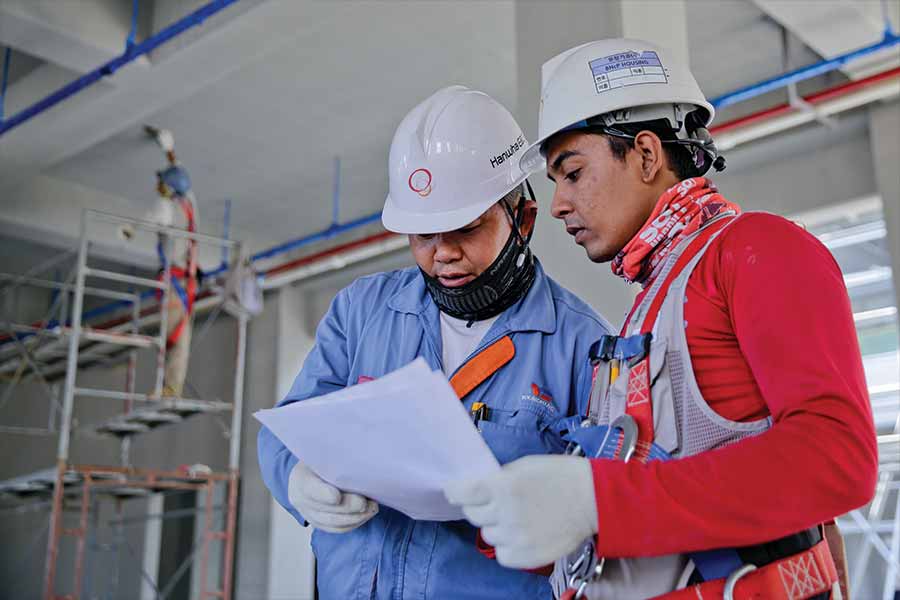The role of the building safety regulator and key building information

As the UK takes significant steps towards enhancing building safety in light of past incidents and challenges it is crucial for stakeholders in the construction and real estate sectors to understand the role of Key Building Information (KBI) and the Building Safety Regulator. In this blog, we will delve into these essential aspects, providing insights into their significance and implications.
The Role of the Building Safety Regulator

The Building Safety Regulator (BSR) is a central authority established to oversee and regulate building safety in the UK. This new regulatory body’s primary objective is to ensure the safety of high-rise residential buildings, defined as those with seven or more floors or a height of 18 meters or more, containing at least two residential units.
The BSR carries out various critical functions, including:
- Registration of Buildings: High-rise residential buildings need to be registered with the BSR, and this process involves submitting KBI for assessment.
- Safety Oversight: The BSR monitors and assesses building safety, ensuring that the relevant standards are met.
- Regulatory Framework: The BSR develops and enforces regulations, standards, and guidance to improve building safety.
- Inspections: The regulator conducts inspections to verify that buildings comply with the safety requirements.
- Enforcement: The BSR has the authority to take enforcement actions, such as ordering necessary remedial works, in cases of non-compliance.
- Data Management: The BSR maintains a database of KBI to support its regulatory functions and to aid in future inspections.
Understanding Key Building Information (KBI)

Key Building Information, often referred to as KBI, is a fundamental concept in the UK’s new approach to building safety. It pertains to comprehensive data about a building’s structure, systems and safety measures. This information encompasses various elements such as:
- Fire Safety Systems: KBI includes details about fire alarms, fire doors, sprinkler systems and emergency evacuation strategies.
- Materials and Cladding: Information on the types of materials used in construction, including those in external walls, is essential for assessing fire risks.
- Energy Supplies: This involves data on energy storage and on-site energy generation, which impacts the building’s sustainability and safety.
- Structure Type: Knowing the structure type provides insights into the building’s design and potential vulnerabilities.
- Roof and Staircases: Understanding the roof type and staircase configurations is critical for safety assessments.
- External Wall Materials: Information on the materials visible on the outside walls, especially those like Aluminium Composite Material (ACM) or High-Pressure Laminate (HPL), is vital for fire safety evaluations.
- Building Features: Data regarding machinery and equipment within the building, such as heating, ventilation and energy generation, must also be included.
The Importance of Compliance

Building owners and accountable persons must prioritise compliance with the BSR’s regulations and requirements. By providing accurate and complete KBI, stakeholders contribute to building safety and enable effective risk assessments. Failing to comply with the BSR’s directives can lead to enforcement actions, penalties and, more importantly, jeopardise the safety of building occupants.
In conclusion, the introduction of Key Building Information and the establishment of the Building Safety Regulator represent significant advancements in the UK’s approach to building safety. These measures aim to prevent future tragedies and ensure that residents can live in high-rise residential buildings with confidence. Stakeholders must embrace these changes and actively participate in the process of registering buildings and providing the necessary information. By doing so, we can collectively create a safer and more secure built environment for all.
Emergency Response Management Company (ERMCO) are sector leaders in collating this information on behalf of landlords, facility management companies and local authorities.
Working to the Building Safety Regulator’s guidelines ERMCO can support and act on behalf of responsible persons in charge of high risk buildings.
ERMCO remain focused on being sector leaders and liaise with the BSR to provide the best service possible.
